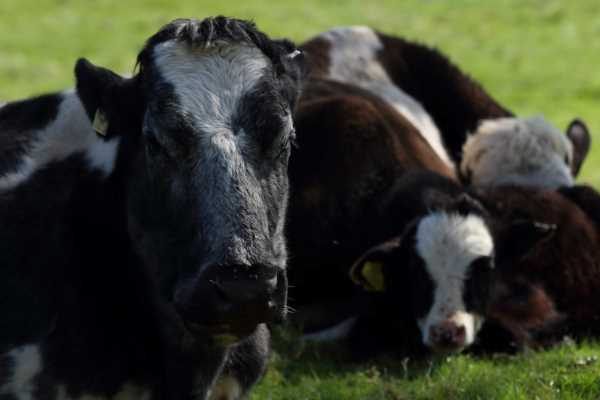Livestock diseases are never great. For one, they could pass to humans and create a possible pandemic, like the COVID-19 zoonotic virus. If they don’t harm humans, the diseases are likely to harm livestock, which could stunt an economy and society’s daily processes in areas that rely on that livestock for food or their by-products.
Right now, African Swine Fever is a cause for concern. While it might not affect humans as other zoonotic diseases do, this illness is deadly to pigs and could endanger a significant portion of livestock in many parts of the world. Widespread disease, especially one that infects other animals so quickly, is never a good thing and must be dealt with before it becomes a major issue.
Do Zoonotic Diseases Usually Hurt Humans?
Many of the pathogens that cause zoonotic diseases might not affect animals in the same way they do humans. While animals are likely used to the presence of a virus and may appear healthy, humans are not. Many seniors and young children are susceptible to these zoonotic, animal-borne illnesses, so it’s important to keep them healthy by keeping contaminated substances away from them or tending to their hygiene after they have direct contact with an animal that might be affected.
Zoonotic diseases pose a threat to humans, even if wildlife have learned to live with them and appear perfectly healthy while hosting the bacteria or virus. While most illnesses from animals can’t affect humans, those that do can come from contaminated food or water — making it that much more important that animals and animal products are dealt with responsibly.
Something that might seem harmless to animals could pose a real threat to humans because their genetic makeup is different, and they’ve never had to deal with this virus. Even COVID-19 is a zoonotic disease, originating in bats.
Processes to Change to Prevent Widespread Disease
While you may not be able to eliminate disease spread entirely, you can change your behaviour to ensure the safety of your herd. When dealing with sick animals, you may have to isolate them from the rest of the group. The people who deal closely with these animals can change up a few techniques to slow the spread of disease.
1. Use the Right Equipment
The only pieces of equipment that should get near livestock feeders are equipment that deals directly with food. Setting this rule prevents contamination from other parts of livestock care to the feedstuff, in which workers should also use separate machinery to ensure no cross-contamination happens.
Similarly, if the new equipment deals with something else on the land, especially if it crosses into a space where livestock have died, the equipment needs to be sanitized thoroughly to prevent any spread of disease.
2. Transport Animals Safely
Whether you’re taking an animal to the market or a diseased animal away from others, make sure that its temporary space is clean and that you can trust the integrity of the trailer while you’re on the road. Once you’ve finished with one animal or a set of them, consider sanitizing your trailer effectively so that no pathogens will spread to you or any other animals that set foot inside.
3. Keep Things Up-to-Date
When something breaks, people might be tempted to use a replacement rather than pay the upfront cost of fixing it. If you leave something broken instead of repairing it, you risk having to replace its functionality with another piece of equipment or take shortcuts to do the same job.
4. Better Research
With more scientists learning about these zoonotic diseases, humanity can create plans on how to protect themselves and keep infections from spreading. Having researchers inspect livestock that will be used for food can help them detect the presence of certain pathogens, which can then help humans prepare and reduce the chance of someone eating contaminated meat. This way, though it may take up extra resources, people have less risk of contracting a zoonotic illness.
Sometimes, these illnesses don’t hurt humans as much but can destroy livestock, such as the African Swine Fever. Spending time researching and learning more about the diseases that plague herds could teach the affected communities how to stop the spread. Once people know more about a disease, they’ll know exactly how it affects animals — and potentially humans — and what they can best do to stop the spread.
More Research Yields More Hope
In some cases, nothing can prevent contamination from one livestock herd to another. Because different herds usually move through the same places daily, it’s easy for transmission to happen because of the communal spaces that herds share when on the move.
Still, by implementing several tactics to either slow the spread or eliminate possible contamination entirely, diseases like the African Swine Fever should slow down, and cures can e created for the affected animals. While it is alarming that livestock could die out due to diseases like these, there is hope for a brighter future once scientists know all they can about zoonotic viruses that work to the detriment of animals and humans.









